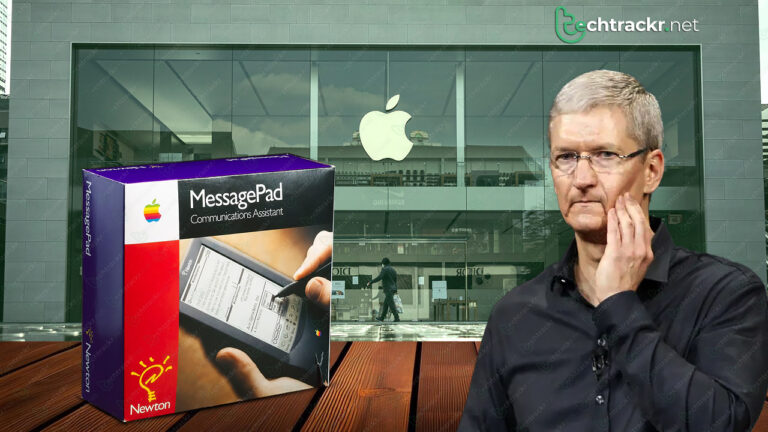
Apple is widely admired worldwide for being a top-notch tech company. They’ve earned their reputation by crafting dependable, top-of-the-line products with cutting-edge features. From the ever-present iPhones to Macs equipped with custom M-series chips and a streaming service that transformed from “the one with the soccer show” into an award-winning platform boasting an impressive lineup of original content.
Despite all the acclaim Apple gets, it’s easy to overlook the numerous failures the company has faced, including some projects that never saw the light of day. Apple’s journey to the top had its fair share of challenges, with some setbacks pushing the company dangerously close to bankruptcy. Many of these doomed devices were either poorly executed or excessively ambitious, yet almost all of them played a role in shaping the devices that Apple users now love.
You might find it intriguing to discover, or perhaps recall, some of the more recent missteps. Let’s have a look at some of Apple’s worst products.
Also Read: What’s NPU, and why is everyone suddenly interested in it?
Apple Pippin
In the early ’90s, a few years after Steve Jobs got the boot and during a challenging period in Apple’s history. Wanting to reach more households, Apple came up with an open hardware platform centered around the Macintosh operating system. It was basically a “slimmed-down Macintosh,” running the classic Mac OS and fueled by a PowerPC processor.
This wasn’t something you could buy in stores; instead, Apple aimed to license it out to different companies, allowing them to put their own spin on it with modifications. It was versatile, serving purposes like education, home computing, or even functioning as a multimedia hub.
The top toy maker and game developer, Bandai, took charge and transformed Apple’s “Pippin Power Player” prototype into the Pippin Atmark game console in Japan and Pippin @World in the US. Powered by a 32-bit PowerPC 603 processor with 6MB of RAM, the Pippin Atmark/@World wasn’t the most potent system, but it boasted some cool features. These included an NTSC/PAL switch, a controller shaped like a boomerang, games that could be played on a Mac desktop, and compatibility with a full-size keyboard.
Twentieth Anniversary Macintosh
Launched to mark the 20th birthday of Apple Computer, the Twentieth Anniversary Macintosh, commonly known as TAM, was a tech marvel loaded with the latest gadgets. It wasn’t designed for the average consumer; rather, it stood as a luxurious item that set it apart from anything Apple had put out before.
The TAM sported an unconventional flat design, featuring computer inputs and a CD drive on the lower half and a 12.1-inch active-matrix LCD display on top. It aimed to be the ultimate all-in-one: a computer, a TV (complete with a built-in tuner), and a radio (featuring an FM tuner). It even came with a massive Bose subwoofer.
In terms of computer specs, the TAM boasted a PowerPC 603e CPU clocking in at 250MHz, two RAM slots allowing up to 128MB, a 2GB storage drive, and ATI 3D Rage 2 graphics. Apple still has a specs page for the Twentieth Anniversary Macintosh on its official website.
Macintosh TV
Redefining the concept of “all-in-one,” the Macintosh TV was a hybrid, part desktop and part television. The idea was to save both space and ideally some money by getting a desktop that could also serve as your TV. At its core, this machine featured a Macintosh LC 520 with a 32 MHz Motorola 68030 processor, a modest 5MB of memory (upgradeable to 8MB), and a 160MB hard drive. The standout feature, aside from its fabulous and now quite rare all-black design? A built-in 14-inch Sony Trinitron CRT TV with a resolution of 640 x 480 pixels.
In today’s world, you can easily watch TV in a separate app or browser window while multitasking on your computer. However, in the past, you didn’t have that luxury. With the Macintosh TV, it was an either-or situation: hitting the “TV/Mac” button on the credit card-sized Sony remote that came with the PC switched your inputs from Mac to TV. So, you could be gaming on Pac-Man on the TV and then seamlessly switch back to work on your Mac with just the press of a button. It was a pretty cool feature back then, especially for college students squeezed into small dorms. However, it came with a hefty price tag, selling at $2,099, which was about $500 more than the comparable Color Classic II.
Also Read: EU wants to become the “quantum valley” of the world
AirPower Charging Pad
The one that slipped through the cracks. What makes AirPower such an intriguing flop is that Apple gave the public a sneak peek, which is something the company usually only does when it’s sure about launching a product. We had a clear picture of how AirPower was going to look, its functionality, and it even had a name! The media even got a hands-on experience with non-working prototypes.
The moment Apple probably regrets happened on September 12, 2017, during the launch event for the iPhone 8, iPhone 8 Plus, iPhone X, and AirPods charging case. Onstage, Apple confidently declared that adding wireless charging to the iPhone 8 and iPhone X (though, to be fair, wireless charging wasn’t exactly a new concept at the time) would bring a “lot of good devices” to the market. Apple aimed to join the wireless charging party by introducing a charger that could power three devices simultaneously—like a phone, wireless earbuds, and a smartwatch.
Power Mac G4 Cube
Crafted by Jonathan Ive, the Power Mac G4 Cube was a compact desktop encased in an appealing acrylic housing, creating the impression of a levitating computer. This futuristic-looking device skipped the fans and relied on passive cooling through a sizable vent on top. Despite the inevitable comparisons to a tissue box or paper shredder, it was a stunning piece of tech.
The base model packed a PowerPC G4 processor, 64MB of RAM, a 20GB HDD spinning at 5,400 rpm, and an ATI Rage 128 Pro video card. Opting for the higher-end version got you a 500MHz processor, 128MB of RAM, and a 30GB drive. The Power Mac G4 Cube generally received positive reviews, with most applauding its stunning design.
